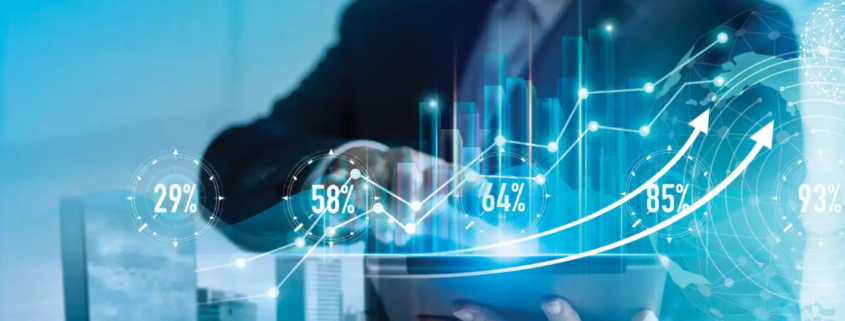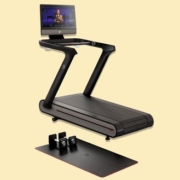What is business analytics? Using data to improve business outcomes
What is business analytics?
Business analytics is the practical application of statistical analysis and technologies on business data to identify and anticipate trends and predict business outcomes. Research firm Gartner defines business analytics as “solutions used to build analysis models and simulations to create scenarios, understand realities, and predict future states.â€
While quantitative analysis, operational analysis, and data visualizations are key components of business analytics, the goal is to use the insights gained to shape business decisions. The discipline is a key facet of the business analyst role.
Wake Forest University School of Business notes that key business analytics activities include:
- Identifying new patterns and relationships with data mining
- Using quantitative and statistical analysis to design business models
- Conducting A/B and multivariable testing based on findings
- Forecasting future business needs, performance, and industry trends with predictive modeling
- Communicating findings to colleagues, management, and customers
What are the benefits of business analytics?
Business analytics can help you improve operational efficiency, better understand your customers, project future outcomes, glean insights to aid in decision-making, measure performance, drive growth, discover hidden trends, generate leads, and scale your business in the right direction, according to digital skills training company Simplilearn.
What is the difference between business analytics and data analytics?
Business analytics is a subset of data analytics. Data analytics is used across disciplines to find trends and solve problems using data mining, data cleansing, data transformation, data modeling, and more. Business analytics also involves data mining, statistical analysis, predictive modeling, and the like, but is focused on driving better business decisions.
What is the difference between business analytics and business intelligence?
Business analytics and business intelligence (BI) serve similar purposes and are often used as interchangeable terms, but BI can be considered a subset of business analytics. BI focuses on descriptive analytics, data collection, data storage, knowledge management, and data analysis to evaluate past business data and better understand currently known information. Whereas BI studies historical data to guide business decision-making, business analytics is about looking forward. It uses data mining, data modeling, and machine learning to answer “why†something happened and predict what might happen in the future.
Business analytics techniques
According to Harvard Business School Online, there are three primary types of business analytics:
- Descriptive analytics: What is happening in your business right now? Descriptive analytics uses historical and current data to describe the organization’s present state by identifying trends and patterns. This is the purview of BI.
- Predictive analytics: What is likely to happen in the future? Predictive analytics is the use of techniques such as statistical modeling, forecasting, and machine learning to make predictions about future outcomes.
- Prescriptive analytics: What do we need to do? Prescriptive analytics is the application of testing and other techniques to recommend specific solutions that will deliver desired business outcomes.
- Diagnostic analytics: Why is it happening? Diagnostic analytics uses analytics techniques to discover the factors or reasons for past or current performance.
Examples of business analytics
San Jose Sharks build fan engagement
Starting in 2019, the San Jose Sharks began integrating its operational data, marketing systems, and ticket sales with front-end, fan-facing experiences and promotions to enable the NHL hockey team to capture and quantify the needs and preferences of its fan segments: season ticket holders, occasional visitors, and newcomers. It uses the insights to power targeted marketing campaigns based on actual purchasing behavior and experience data. When implementing the system, Neda Tabatabaie, vice president of business analytics and technology for the San Jose Sharks, said she anticipated a 12% increase in ticket revenue, a 20% projected reduction in season ticket holder churn, and a 7% increase in campaign effectiveness (measured in click-throughs).
GSK finds inventory reduction opportunities
As part of a program designed to accelerate its use of enterprise data and analytics, pharmaceutical titan GlaxoSmithKline (GSK) designed a set of analytics tools focused on inventory reduction opportunities across the company’s supply chain. The suite of tools included a digital value stream map, safety stock optimizer, inventory corridor report, and planning cockpit.
Shankar Jegasothy, director of supply chain analytics at GSK, says the tools helped GSK gain better visibility into its end-to-end supply chain and then use predictive and prescriptive analytics to guide decisions around inventory and planning.
Kaiser Permanente streamlines operations
Healthcare consortium Kaiser Permanente uses analytics to reduce patient waiting times and the amount of time hospital leaders spend manually preparing data for operational activities.
In 2018, the consortium’s IT function launched Operations Watch List (OWL), a mobile app that provides a comprehensive, near real-time view of key hospital quality, safety, and throughput metrics (including hospital census, bed demand and availability, and patient discharges).
In its first year, OWL reduced patient wait time for admission to the emergency department by an average of 27 minutes per patient. Surveys also showed hospital managers reduced the amount of time they spent manually preparing data for operational activities by an average of 323 minutes per month.
Business analytics tools
Business analytics professionals need to be fluent in a variety of tools and programming languages. According to the Harvard Business Analytics program, the top tools for business analytics professionals are:
- SQL: SQL is the lingua franca of data analysis. Business analytics professionals use SQL queries to extract and analyze data from transactions databases and to develop visualizations.
- Statistical languages: Business analytics professionals frequently use R for statistical analysis and Python for general programming.
- Statistical software: Business analytics professionals frequently use software including SPSS, SAS, Sage, Mathematica, and Excel to manage and analyze data.
Business analytics dashboard components
According to analytics platform company OmniSci, the main components of a typical business analytics dashboard include:
- Data aggregation: Before it can be analyzed, data must be gathered, organized, and filtered.
- Data mining: Data mining sorts through large datasets using databases, statistics, and machine learning to identify trends and establish relationships.
- Association and sequence identification: Predictable actions that are performed in association with other actions or sequentially must be identified.
- Text mining: Text mining is used to explore and organize large, unstructured datasets for qualitative and quantitative analysis.
- Forecasting: Forecasting analyzes historical data from a specific period to make informed estimates predictive of future events or behaviors.
- Predictive analytics: Predictive business analytics use a variety of statistical techniques to create predictive models that extract information from datasets, identify patterns, and provide a predictive score for an array of organizational outcomes.
- Optimization: Once trends have been identified and predictions made, simulation techniques can be used to test best-case scenarios.
- Data visualization: Data visualization provides visual representations of charts and graphs for easy and quick data analysis.











